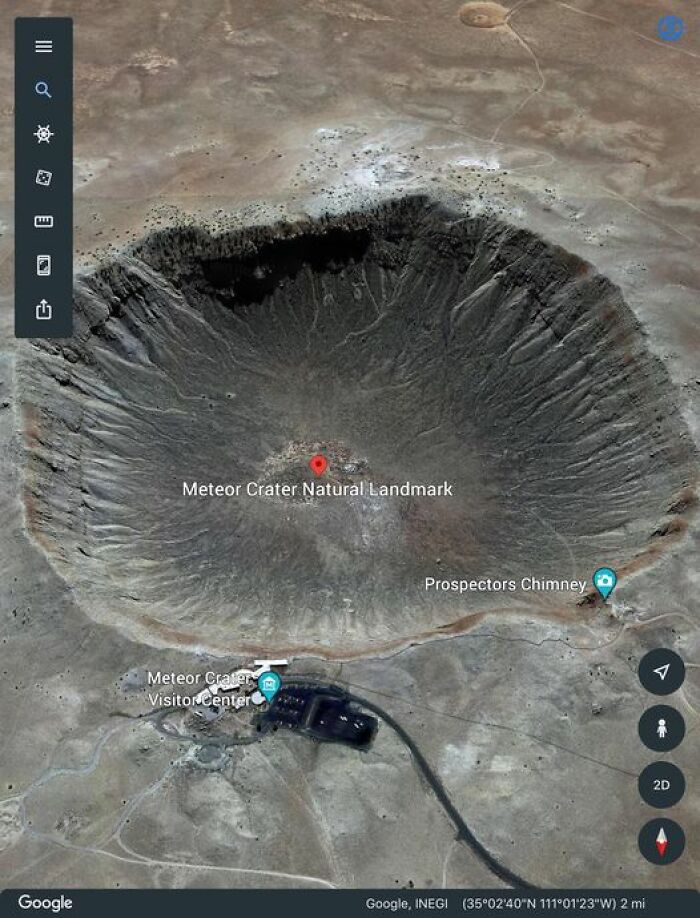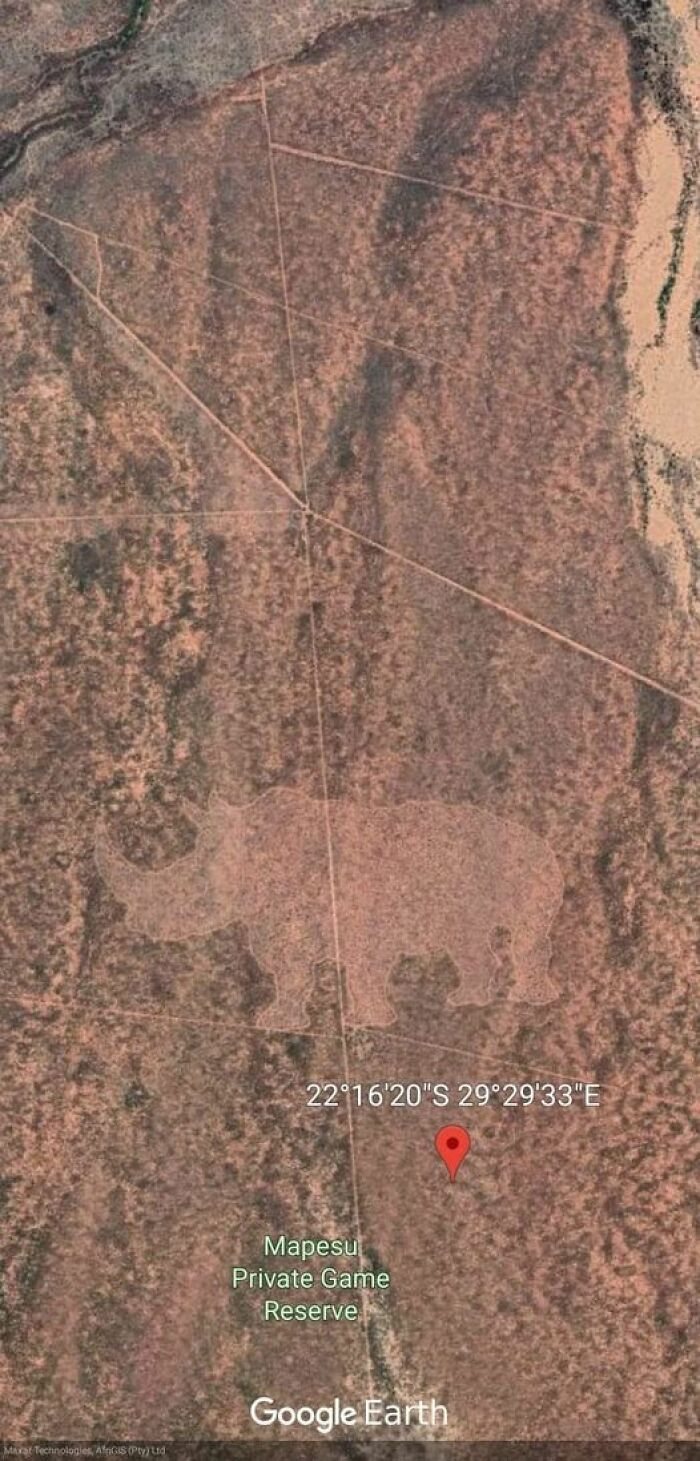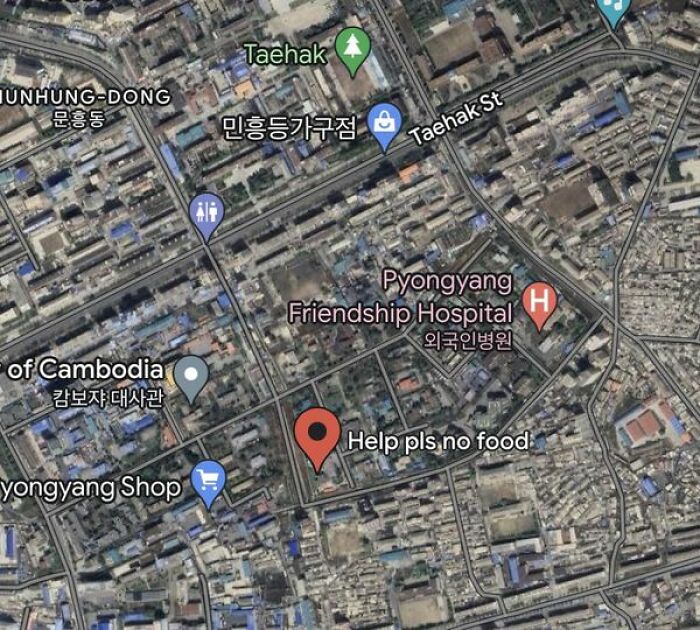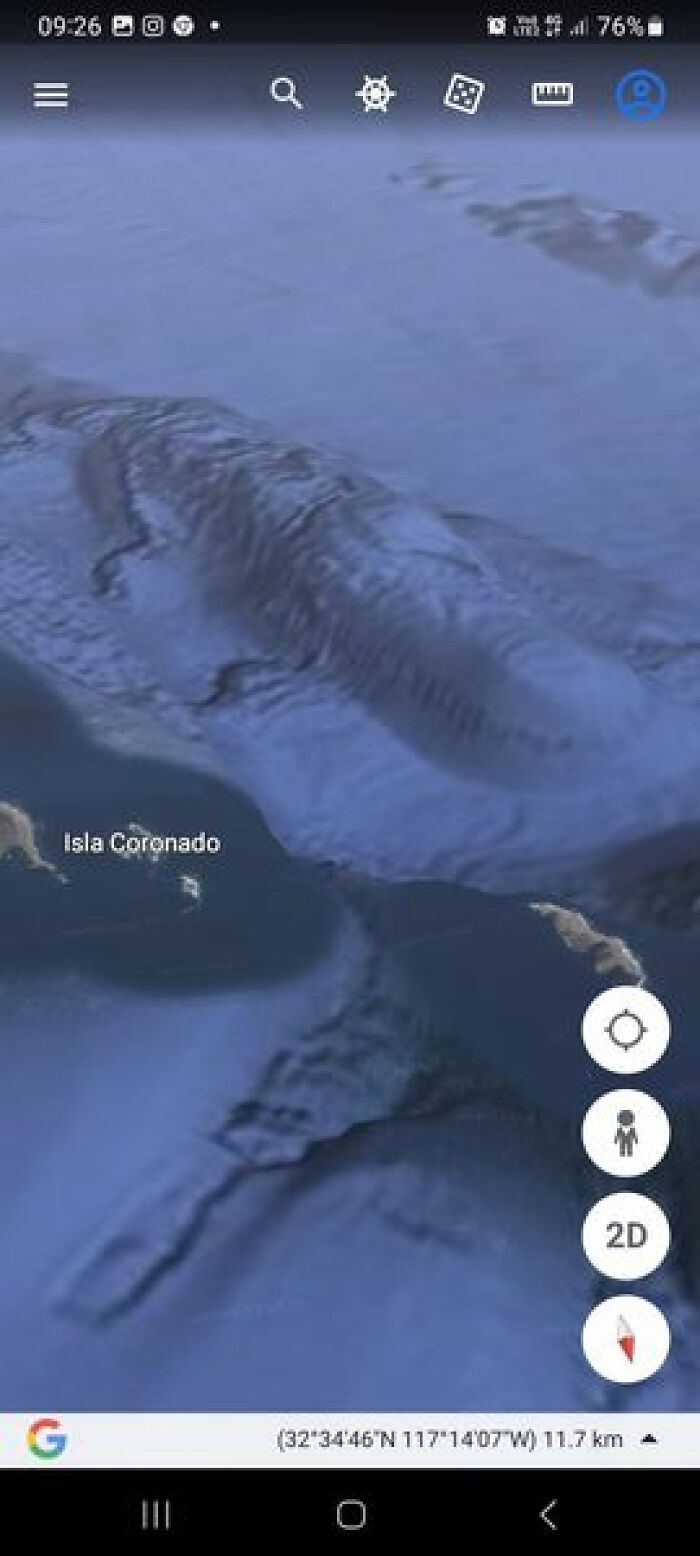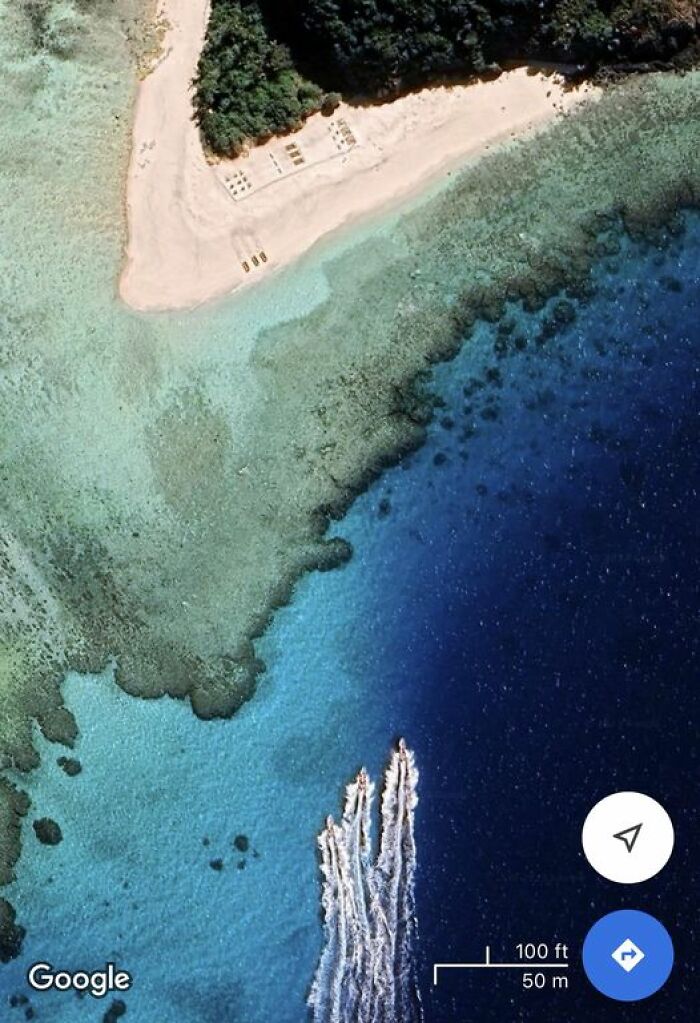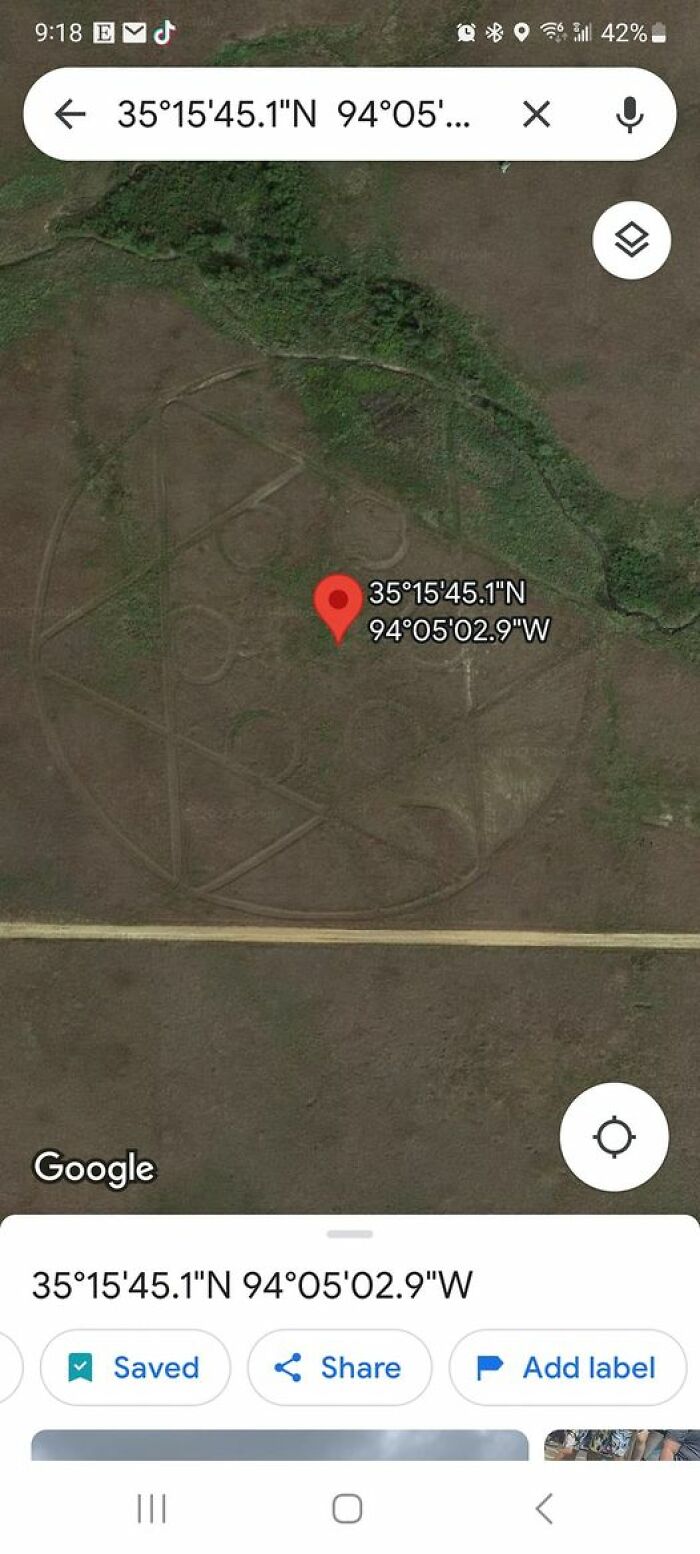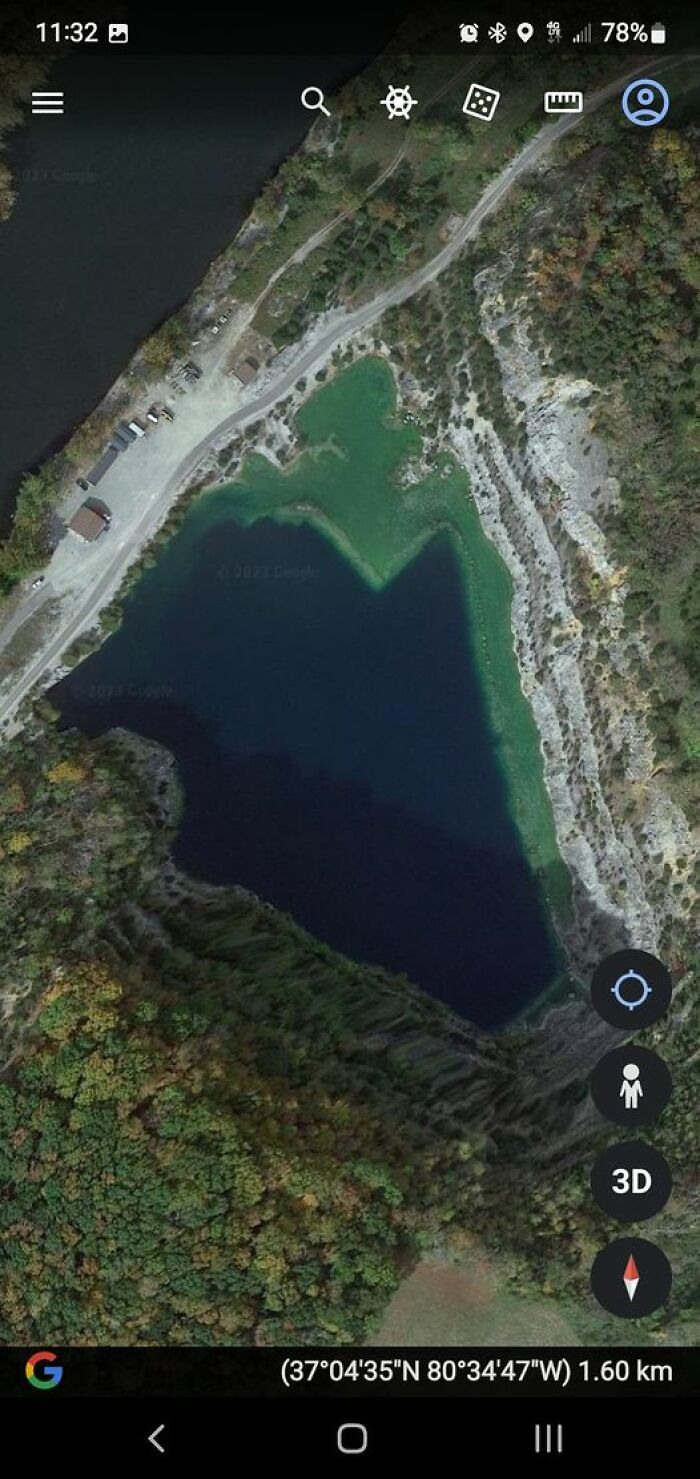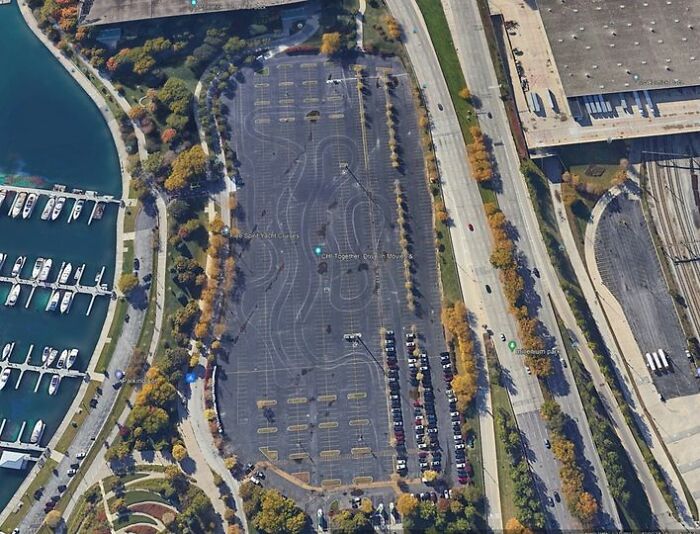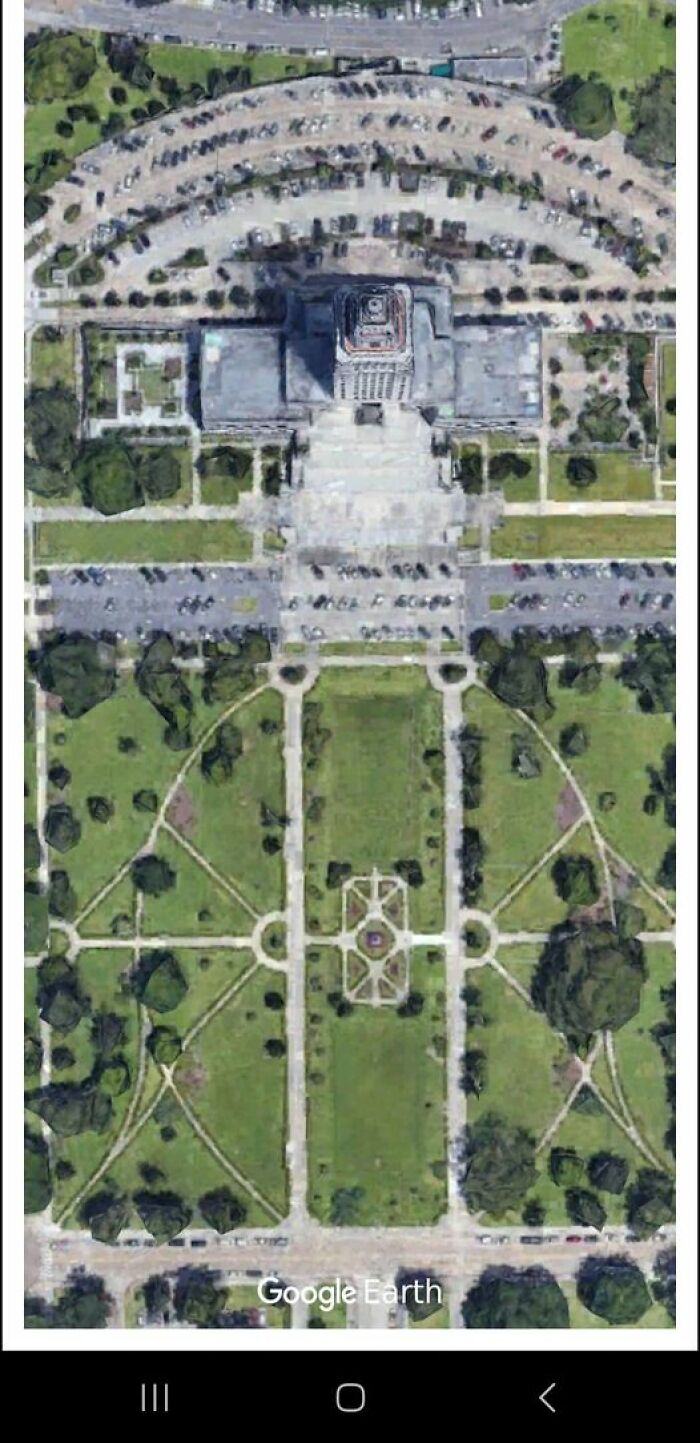
30 Times People Found Such Strange Things On Google Earth, They Just Had To Share Them
InterviewGoogle Earth is a lot of fun to play around with in your spare time. You can visit and explore the far corners of the world during your coffee break, even if your actual vacation isn’t due for a few more months. However, you might stumble upon some truly bizarre things during your digital travels.
That’s where the popular ‘Google Earth, Structures and Anomalies’ Facebook group comes in. Its members are all big fans of the Google Earth project and post the strange structures and cool anomalies they’ve come across while using it. We’ve collected some of the group’s most interesting featured mysteries to share with you.
Bored Panda also reached out to the team running the group, and Josie, the founder and one of its administrators, was happy to tell us all about the inspiration behind it and its success. Put on your explorers’ hats, Pandas, and let’s go!
This post may include affiliate links.
This Is The Largest Baobab In Madagascar And Is Called The 'Tree Of Life' Or 'Mother Of The Forest'
Cat
Arizona’s Meteor Crater. Look How Close It Came To Hitting The Visitor Center!!
Founded just over three years ago in late March, 2020, the Facebook group has grown by leaps and bounds. At the time of writing, the ‘Google Earth, Structures and Anomalies’ online community had nearly 1.1 million members on the social media platform.
The band of administrators and moderators curating the entire project asks all members to “give more to this group than you take.” That means avoiding spam and self-promotion.
The online group also has no tolerance for “bullying of any kind” and there’s no place for degrading comments. What’s more, all members—new or old—ought to be polite to the admins and mods, as well as treat other members with the respect that they deserve. In any community of this size, it becomes especially important to have clear rules and a team that enforces them fairly and quickly.
A Local Sight In A Field
Western Australia
Up north in WA in the King Leopold Ranges. It gets pretty wet up there from time to time.
Found Where I Should Have Been Born
Josie, the founder of the ‘Google Earth, Structures and Anomalies' Facebook group, has been a huge fan of the Google Earth project for a very long while now.
"I have been looking on Google Earth for about 12 years," she shared with Bored Panda. "It is a hobby of mine and during lockdown I had more time on my hands," she shared that she made a group so that she had "somewhere to store my interesting finds."
Three years later, the group continues to be a resounding success. However, Josie noted that she "never imagined it would turn into what it has."
Noor 3 In Morocco. The Mirrors Direct Light To The Tower, Where The Light Heats Up Molten Salt. The Molten Salt Creates Steam To Turn The Turbines And Run The Generators
In A French Village To Slow Drivers Down
They shouldn't have drank that 7th glass of wine with lunch that day. Line painting became shall we dare say a little challenging after that
Ribbit
Josie highlighted the fact that the group has a great community and a very active team of administrators and moderators. "We are a really friendly group and have an amazing admin team that works 24 hours around the clock to keep everything running smoothly," the founder shared. She added: "I would like to say 'thank you' to them all."
Bored Panda was interested in getting the group founder's take as to why strange Google Earth content resonates with so many social media and internet users in the first place.
"I generally believe people are curious about the world we live in," she shared her perspective.
North Korea
Ooof! My heart goes out to the people of North Korea. May they one day, (hopefully soon) be freed from their tyrannical leader and government.
Amazon Is Going To Be Pissed When They Have To Deliver Here
Here’s A Cool One In Florida
Not only that, ‘Google Earth, Structures and Anomalies' may have seen so much growth because there weren't many competitors at the start of the lockdowns, three years ago.
"There weren't many Google Earth groups when I created my one," Josie said.
In the meantime, we were curious what advice Josie would give someone who's completely new to exploring the world using Google Earth. Though the program is widely known across the far reaches of the globe, there are, nonetheless, people who are new to it.
According to her, the best thing to do is to just get stuck in. "I would just start looking at somewhere you have always wanted to visit, and maybe anywhere else that has piqued your curiosity and you have always wanted to see up close," she told Bored Panda.
"Photo Sphere, a tool of Google Earth, is a great way to see photos people have took and shared with the app," she said.
Baarle, The Most Complex Border In The World. The Dutch Municipality Of Baarle-Nassau Is Home To More Than 20 Belgian Enclaves, Some Of Which Contain Dutch Enclaves
Not Too Far From York. UK. On A Clear Day You Can See This From 28 Miles Away. Weird
Island Shaped As A Heart In Galesnjak, Croatia
The ‘Google Earth, Structures and Anomalies’ is very active, with members sharing new posts every single day. There have been a whopping 6,822 posts on the group in the last month alone, which should tell you about the type of traffic there. As it turns out, people love exploring the globe with Google Earth.
The Google Earth project is, in fact, older than many folks might think: it was launched all the way back in June, 2001. At the time of writing, it was over 22 years old. The program uses satellite imagery, aerial photography, and GIS data to superimpose it on a three-dimensional globe. Users can then look at cities and landscapes from various angles.
Manaos Brésil
Remind me a lot of Central Park in New York City, but smaller, and with 8-and-15-foot buildings surrounding it, instead of skycrapers reaching hundreds of feet into the air.
Afrika
A Freight Ship That Crashed Into North Sentinel Island In 1981. This Island Is Home To The Supposed Last True (Mostly Unbothered) Indigenous People On The Planet
Isn't this the island where the indigenous people are, "unbothered" because they kill anyone who tries to go there? 🤨
Back in 2019, Google announced that the Google Earth program captured 10 million miles of Strew View imagery, and 36 million square miles of Google Earth imagery, and covered over 97% of our planet. That doesn’t mean that the project is all-powerful, though! Internet users are forbidden from viewing certain sensitive areas and locations due to national security and privacy concerns. Some military bases, for instance, would be off-limits.
Found This A Few Years Ago
The Massachusetts Chainsaw Massacre
My Hometown’s Library
Google Earth is a far more varied project than some people realize. For one, the name is a bit of a misnomer because you can use the program to explore the Moon, our neighboring planet Mars. You can also access Google Sky which lets you navigate space. There’s a lot of cool stuff to be found if you’ve got a bit of time and a spot of patience!
Welcome To Taumatawhakatangihangakoauauotamateaturipukakapiki-Maungahoronukupokaiwhenuakitnatahu
Monuriki Island Where The Movie Cast Away Was Filmed
I Found This "Man Emerging From Water" By Accident On Google Earth
Meanwhile, Google Maps was launched a bit later than Google Earth, seeing its debut in February 2005, (18 years ago at the time of writing). Google Maps focuses on Stree View, looks at traffic conditions in real-time, and lets users plan their routes, no matter what mode of transportation they’re using. As of 2020, a billion people around the world use Google Maps every month. The program adds a lot of additional opportunities for digital explorers.
I Wonder What They Don’t Want Us To See, This Is Near The Athens Airport
😱😱😱
What Is This?
The ‘Google Earth, Structures and Anomalies’ Facebook group isn’t the only internet community dedicated to the program. Recently, Bored Panda spoke to Nik Ianevitch, the founder and curator of the ‘Weird Google Earth’ project, focusing on the interesting things found using Google Earth and Google Maps.
I Said We’re Going Back; Back To The Future Doc!
Some May Say That What Started Out As A Heartfelt Tribute To Otis Redding, Somehow Went Very Very Wrong..... To View This Go To 32°33'26.24"N 83°49'29.38"W, Then Go Back In Time To March 2017
It’s Categorized As A Synagogue
There are plenty of oddities to be found with the two programs. "I soon realized there were loads of locations that are weird, out-of-place, even provocative.
I started collecting those and very soon had enough to share with others. So the project kind of 'just happened,’” the founder of ‘Weird Google Earth’ told Bored Panda during a recent interview.
According to Ianevitch, from ‘Weird Google Earth,’ people love this type of content because it’s “always fresh, captivating,” as well as easy to consume and share because it’s bite-sized. “A truly good post is one that people come back to over the years," he said.
Orkney Islands
All The Empty Streets, No Houses…. Nw Coast Of The Salton Sea. So Weird!
This is in southern California out in the desert just south of Joshua Tree. I believe this happened because developers thought the town would become a booming tourist attraction, but it failed to do that. They built out the roads, but the people never came in the numbers they planned for. Current population is around 5,000, which is the highest its been for a while. If you look closely, you can see some houses are there, they're just spread out.
"The Band Of Holes" - Andes Mountains
California Desert, North Of China Lake. Very Curious As To It’s Use
The Big Merino, Goulburn Nsw Australia
Found Me Another Plane In Flight Do They All Look Trippy!?
This gives a nice indication of the photographic process in action, and tells us this is aerial photography, not satellite. The three different colors are taken by the same sensor through a color-changing filter, and then a composite is made by overlaying. This allows using the full range of the sensor for all colors instead of using just 1/3rd of the receptors for any color. It's a cheap trick to increase the resolution with the same hardware, but since the shots are taken a few hundredth of a second apart, fast moving objects have this rainbow haze...
Nevada Nuclear Test Site
Over 1,000 detonations have been set off here. What on earth were they trying to find out from all those 'Tests'.
Why Does Venice, Italy Look Like Patrick Needing Water?
Wolfe Creek Meteorite Crater In Western Australia Made Impact Within The Last 120,000 Years
Around 1855km from Perth. Western Australia is a pretty big state
A Giant Croc
Pac-Man !!! Near Edwards Washington!
Private Backyard Golf Course Of The Owner Of D**k's Sporting Goods Outside Of Pittsburgh
Seriously, bp? D**k is a name. Not a great one in my opinion, but still a name.
Any Survivor Fans? On An Island In Fiji You Can See A Survivor Challenge Set Up, And Boats Bringing Either Contestants Or The Testers Out To It
Ruining lovely natural environments for the sake of a dumb TV show. :( Survivor has done a lot of damage over the years!
Biggest Open Pit Mine In The World
And this abomination will be there for thousands of years. Maybe millions.
Ft Chaffee In Arkansas What Does It All Mean?
$$$$
The Great Orme North Wales
A Quarry Until They Hit Water! Near My House In Sw Virginia
The Wienermobile In Kirksville Missouri
How Cool !! In Dallas
Anybody Seen This Man Appeared In Australia
A Harbour, With Nothing But Sea Around? So Why?
You See These Around Submarine Bases. I've Only Found 3, But They're Apparently All Over The World
Degaussing facility, makes the submarine harder to track by magnetic anomaly detection equipment
Here Is Another Home In The Green Bay Area. Was Built In The Early 2000’s And I Believe To This Day No One Has Actually Lived In This Home
An Entire Lake And Housing Development In The Middle Of Nowhere Utah. Driven By This Many Times On My Way To See The Wild Mustangs
Russian Stand Off (53.1765011, 158.4490708)
Near Spokane, Wa. Zoom In And You Can Find A UFO. Visible From I-90 As You Pass By
Another Scientology Location
I wonder how many people they're keeping prisoner there? Yes, they really do that - there are stories of ex-members who had to escape after being kept locked up. And no one knows what happened to the leader's wife either. She hasn't been seen in years!
Now I Wanna Eat Some Spaghetti
That's probably the oddest way I've ever seen someone carry bungee cords.
Why There's Plane In The Middle Of Ocean . 25.1048972, 63.8332704
There are lots of planes in the oceans, much more than submarines in the sky.
Free Hugs!
Open Pen Salmon Farm In Digby Nova Scotia. Not Alien Base Unfortunately
Race You Through The Parking Lot... 41°51'23.67"N 87°36'53.88"W
Farm Crops In Colombia, South America. Probably Corn, Or Something
Lincoln New Hampshire , USA. The Infamous “Hairpin Turn”.
Anyone know why this was done this way? I mean... The shortest distance between two points is a straight line. Just curious...
Peculiar Sidewalk Formation At Monterey Naval Post Graduate School
Those Who Know….know!
Louisiana State Capitol And Grounds
Yearly Sd Farmers
Vox did a series on weird things they could find on google earth and actually went to them to figure out what they were. My favorite episode they found weird circles in the Sahara Desert and found they were from oil companies mining for oil until they hit some.
Vox did a series on weird things they could find on google earth and actually went to them to figure out what they were. My favorite episode they found weird circles in the Sahara Desert and found they were from oil companies mining for oil until they hit some.

 Dark Mode
Dark Mode 

 No fees, cancel anytime
No fees, cancel anytime 









